“It was the best of times, it was the worst of times… but it’s times like these that define one’s character while creating lifelong memories.”
When friend and outdoors writing legend Ron Spomer asked what I would be hunting in South Africa, I told him my top priorities were to take zebra and impala with a bow, and each of the four springbok colors with a new Knight muzzleloader, all “walk-and-stalk” as they say over there. Ron replied, “you don’t do anything the easy way, do you?” True… true! I guess for me, the degree of difficulty adds to the enjoyment and satisfaction that comes with success. Although not successful with zebra as noted in a previous RM blog, accomplishing the “Springbok Slam” was a highlight of the trip, and will surely be the topic of a future RM blog. This is a tale of two impalas.
During the first week of our trip in Eastern Cape there were plenty of opportunities to take impala. Early one evening while positioning for zebra, I drew on a beautiful young ram that wandered by at only 24 yards. “Zap, you’re dead!” I said as I letoff, more to myself than to wife Debbie posting watch nearby. “You didn’t shoot him, did you?” she asked. “No dear, that’s just something we bowhunters like to do.” Lucky for that young ram, our plan called for hunting impala the last few days of our trip, near Sterkrivier with NB Safaris in the Province of Limpopo. Owners Neil & Karen Barnard operate a beautiful and comfortable modern hunting camp, situated on a spectacular piece of bushveld savannah and woodland property near the magnificent Waterberg Mountains, and loaded with plains game including impala… BIG impala.
![IMG_0633 [1024x768]](https://www.ragingmullet.com/wp-content/uploads/2014/08/IMG_0633-1024x768-300x200.jpg) With Neil Barnard off hunting buffalo with clients in Mozambique, PH Koos Nell was dispatched to fetch us on arrival in Johannesburg. Nell is an imposing figure, but also a kind and exceptionally accommodating man, despite the ruggedness and seemingly brusque exterior that often accompanies native speakers of the Afrikaans language. After a few days hunting springbok near Kimberly at the southern edge of the Kalahari Desert Basin, we made the long drive to NB Safaris, with an evening layover at the palatial Nell home compound. What a treat to meet his lovely family, and trade yet another night in a hotel for one filled with warm hospitality and local flavor!
With Neil Barnard off hunting buffalo with clients in Mozambique, PH Koos Nell was dispatched to fetch us on arrival in Johannesburg. Nell is an imposing figure, but also a kind and exceptionally accommodating man, despite the ruggedness and seemingly brusque exterior that often accompanies native speakers of the Afrikaans language. After a few days hunting springbok near Kimberly at the southern edge of the Kalahari Desert Basin, we made the long drive to NB Safaris, with an evening layover at the palatial Nell home compound. What a treat to meet his lovely family, and trade yet another night in a hotel for one filled with warm hospitality and local flavor!
![IMG_0396 [1024x768]](https://www.ragingmullet.com/wp-content/uploads/2014/08/IMG_0396-1024x768-300x200.jpg) Back on the road north well before dawn the next morning, we were greeted at the lodge with a wonderful brunch. After settling into our “chalet” and unpacking, we were off in the Land Cruiser to look for impala. Koos knows the property well, and it didn’t take long for us to locate a bachelor herd of four rams feeding on a wooded hillside about 300 yards away. Two of them would exceed the 24-inch benchmark, signifying trophy quality. With the new Knight Mountaineer muzzleloader capable of 200+ yard performance in hand, I remember thinking “this is going to be easy!” Those thoughts were short-lived. As the impala moved down the slope toward several kudu that were also feeding nearby, a startling sound of crashing metal reverberated for a few seconds then all was silent. What the…? Debbie, Koos, tracker Elias and I looked at each other in disbelief. Apparently, the moving impala spooked the kudu, which trampled over an “oiler” in their retreat, then vanished along with our quarry. The large metal device, used by the animals to aid control of ever-present ticks, had been placed at the head of a cut in that hillside. Although we tracked and searched the woodland for the remainder of the afternoon, we were unable to relocate the band of big rams. So much for “easy!”
Back on the road north well before dawn the next morning, we were greeted at the lodge with a wonderful brunch. After settling into our “chalet” and unpacking, we were off in the Land Cruiser to look for impala. Koos knows the property well, and it didn’t take long for us to locate a bachelor herd of four rams feeding on a wooded hillside about 300 yards away. Two of them would exceed the 24-inch benchmark, signifying trophy quality. With the new Knight Mountaineer muzzleloader capable of 200+ yard performance in hand, I remember thinking “this is going to be easy!” Those thoughts were short-lived. As the impala moved down the slope toward several kudu that were also feeding nearby, a startling sound of crashing metal reverberated for a few seconds then all was silent. What the…? Debbie, Koos, tracker Elias and I looked at each other in disbelief. Apparently, the moving impala spooked the kudu, which trampled over an “oiler” in their retreat, then vanished along with our quarry. The large metal device, used by the animals to aid control of ever-present ticks, had been placed at the head of a cut in that hillside. Although we tracked and searched the woodland for the remainder of the afternoon, we were unable to relocate the band of big rams. So much for “easy!”
The next morning began in rather exciting fashion, as we walked through smokin-hot cape buffalo tracks, carrying only my bow and muzzleloader among us. Figures… the one time PH Koos leaves his .375 H&H in the Cruiser, we run smack into the big nastys! The heart rate was still tachy when tracker Elias heard grunts he recognized as a blue wildebeest bull. A cloud of dust filled the air as we approached the site of the grunting – a narrow open creek bottom in the thick hardwoods bushveld. An ancient old bull was busy dusting himself loudly and with considerable vigor. The show was fascinating, but when Koos gave me the thumbs-up, I dropped into the grass with bow in hand and crawled toward the edge of the creek. In retrospect, I should have stayed put, as we were already within my self-imposed 50 yard limit for the 750-grain PSE Black Mamba “elephant” arrows I was shooting. But closer is always better, right? So I crept closer, and closer. Warning: Here come the excuses! Knowing the exact distance is critical for a precise shot with these heavy arrows – particularly important on tough animals like this one. Thus, I ranged the rolling bull about a hundred times, later realizing the repeated dashed line reading on the rangefinder was probably caused by the dust in the air, which was also coating my eyeglasses. And, with the blinding, rising sun just peaking over the distant ridge directly in line with the bull in the shadowy creek bottom, I didn’t believe the one 23.5-yard reading that registered! Suddenly there was movement to my left from an obviously large animal, shielded by brush but moving slowly toward the open lane in front of me. My first thought was buffalo, and I looked back at Koos who signaled two thumbs up, indicating a second shooter blue wildebeest. Whew! I relaxed a bit, rose to my knees and came to full draw, expecting a broadside shot under ten yards, then waited, and waited – but the bull never crossed the opening. Instead, he dropped unseen into the creek bottom and emerged behind the old bull still cavorting in the dirt. When I moved to line up a shot, the second bull busted me with a deafening air-blast alarm and the two beests thundered off in a flash of hooves, effectively ending an extraordinary opportunity. Close… really close, but no cigar.
Dawn arrived for our last full day of hunting, and still no impala in the salt. We were greeted this morning by a troop of baboons with young male sentries screaming – amazing that such big sounds come from such small animals. It wasn’t long before tracker Elias spotted a couple of nice impala rams. Remarkable spot, as I had trouble locating them among the yellow and brown shades of late fall, even after Koos pointed them out. Over the next three hours I was up on the sticks with the muzzleloader several times but couldn’t close the deal. Sometimes, the rams were within range, but the thick bush prevented a clear shot. Another time, a kudu cow sounded off to foil the attempt. And yet another time the larger of the two rams walked through an opening at under 100 yards but continued moving without offering a shot, despite a variety of sounds that both Koos and Elias made trying to stop him. In disbelief, Koos said “that old ram must be deaf!” After each failed attempt, Elias would locate the tracks and we would follow. It was truly a pleasure to observe a master working his trade first hand as the miles passed. When the opportunity finally came, it was text book. Elias spotted the old ram standing in an opening in the dense bush, Koos set the sticks for a broadside shot, the Knight Mountaineer belched a cloud of smoke and the grand old ram dropped in his tracks to a perfect 100-yard shoulder shot. Thirteen days into the hunt, and a heavy-horned, large-bodied trophy impala ram was finally in the salt!
That afternoon Koos asked what I wanted to do, and I reminded him that taking an impala with my bow remained as a top priority. So we set out on the final afternoon of hunting to go after an animal widely recognized as one of the most difficult to take with a bow. The wariness and quickness of the impala is legend, and I heard many remarkable stories about them during our trip. One claimed that you cannot win a staring match with an impala, and I personally verified this one in Eastern Cape when I was caught crawling by a mature ewe. She huffed and puffed and stomped her foot, but never even blinked during our 15 minute standoff – which ended when I gave up! Another often repeated story claimed that impala are sometimes hit on their opposite side by bowhunters, as they are quick enough to turn 180 degrees before the arrow arrives, even with shots taken at less than 30 yards. PH Russ Lovemore had verified this one for me from his own personal experience. Talk about jumping the string!
Once again, Koos’ personal tracker Elias produced, spotting a likely subject leaving a waterhole. We quickly closed the distance, and I got my first look at the beautiful ram, feeding alone at only 77 yards. The approach would be mostly in the open, through sparse 18-inch tall grass, but the ram’s position was elevated from mine and the dying wind was favorable. We picked out a distant bush that would provide cover for a shot, then I nocked a fast, light-weight arrow and the stalk was on! The duck-walk and crawl to the bush went well, but the ram was moving as he grazed, so I had to reposition. Choosing the lower course through the dry crackling grass instead of the higher route across a bare dirt embankment seemed like the smarter move at the time. Then the ram suddenly appeared to face me nearly head-on with that now familiar impala stare.
I was caught in an incredibly awkward half-squatting half-crawling position, with left leg forward, right leg back and left arm extended with bow in hand. My bare face was shielded from the late afternoon sun by only the brim of my cap (you forgot the mask, dummy!), so I nosed into the grass and prepared for the standoff. It didn’t take long to realize the mental prep would be more important than the physical. Within a few minutes, nearly every muscle in my 60+ year old body was trying to cramp, but I was determined to win. As the minutes passed, the mind games began. The body screamed “give it up!” but willpower prevented surrender. At one point with the grass pressed in my face, binocular vision was lost. Now there appeared to be two impalas to fool, but there was really only one… or were there two? What seemed like an hour of physical torture and mental anguish actually lasted 14-16 minutes, according to Koos’ watch.
Nearing the limit of my endurance, I took a chance and peeked. The ram was gone! I relaxed for an instant then carefully moved up just enough to spot him feeding again, head down and quartering away. Rolling to my knees to gain elevation for a clear shot, I guestimated the distance at about 30 yards while drawing as slowly and quietly as possible. As the top sight pin settled just behind the front shoulder where fawn color meets the rusty hue, the suddenly alert ram turned broadside and cast that incredibly intense gaze on my steadying form. A small sighting adjustment and the arrow was on its way. The release and line were perfect, but the impact sound was not the solid “thwack” I was expecting. Suspicion that the light arrow had hit high was supported by the closer-than-expected shot distance of only 22 yards, and careful inspection of the blood coated arrow located a few yards from the impact site. After our analysis of the situation, I suggested that we give the animal some time. But with only 90 minutes of daylight remaining, Koos said, “… we must follow-up quickly before we lose the light.”
Koos took my bow, handed me the muzzleloader and advised, “be ready to shoot.” Elias set out on the trail with Koos following closely, then me bringing up the rear. We tracked through a natural cut in the thornbush to the edge of an open, grassy meadow, turning up the shady side of the brush line. Suddenly there was movement out in the open, as the bedded ram lifted his head no more than 60 yards away, and less than 100 yards from where he was shot. Koos turned and whispered for me to shoot him, but notwithstanding the 15-foot blackpowder ignition flame, to do so from third position was unsafe and completely out of the question. With adrenalin now flowing the wounded ram sprinted for the tall grass, and despite the best tracking efforts of Elias and Koos, he was lost.
What should have been one of my top accomplishments and all-time best days of hunting had quickly turned into bitter disappointment. A poor shot and the prospect of losing my first animal in more than 50 years of hunting were making me sick. The feeling continued throughout the night and into the next morning, as we departed on the 10,000 mile journey home. But this “tale of two impalas” has a happy ending! Soon after returning home, I received an email from NB Safaris saying that my trophy impala ram had been recovered! “Dankie vir die wonderlike ervaring” to Neil & Karen Barnard and NB Safaris, and “dankie dat jy so baie vir jou pogings” to my new South African comrades Koos Nell and Elias, who found my lost impala and thus, brought closure to this most memorable chapter of life experience.
ALL RIGHTS RESERVED – IMAGES & STORY – TONY MARTINS – 2012

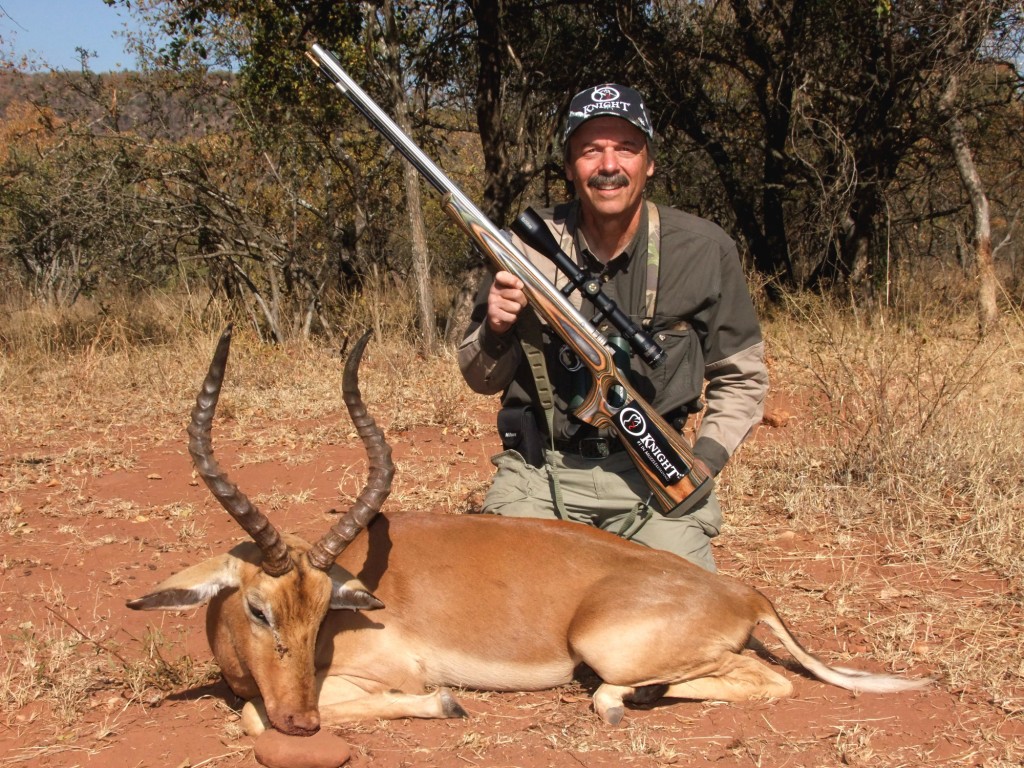
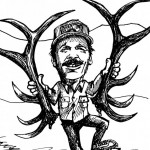
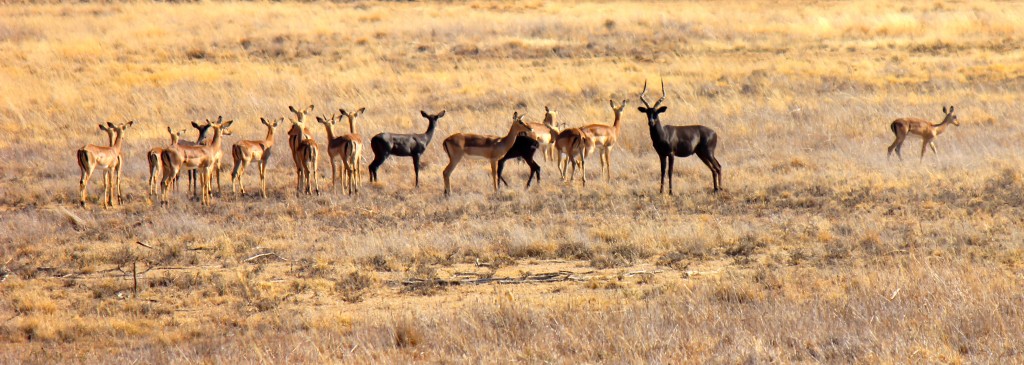
![IMG_0897 [1024x768]](https://www.ragingmullet.com/wp-content/uploads/2014/08/IMG_0897-1024x768-200x300.jpg)
![HPIM4491 [1024x768]](https://www.ragingmullet.com/wp-content/uploads/2014/08/HPIM4491-1024x768-225x300.jpg)
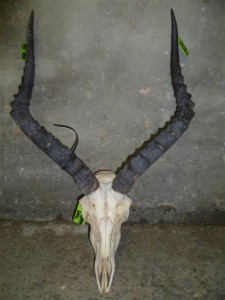


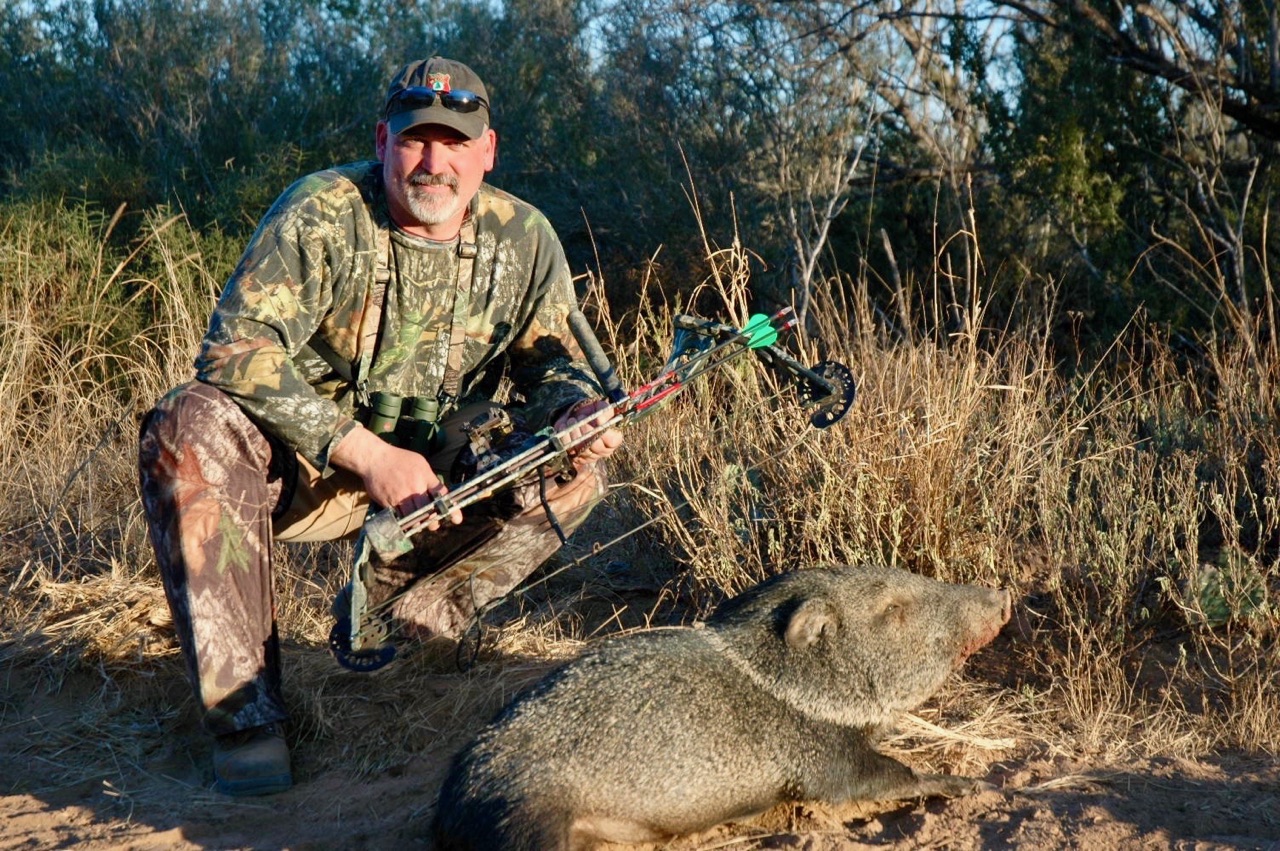

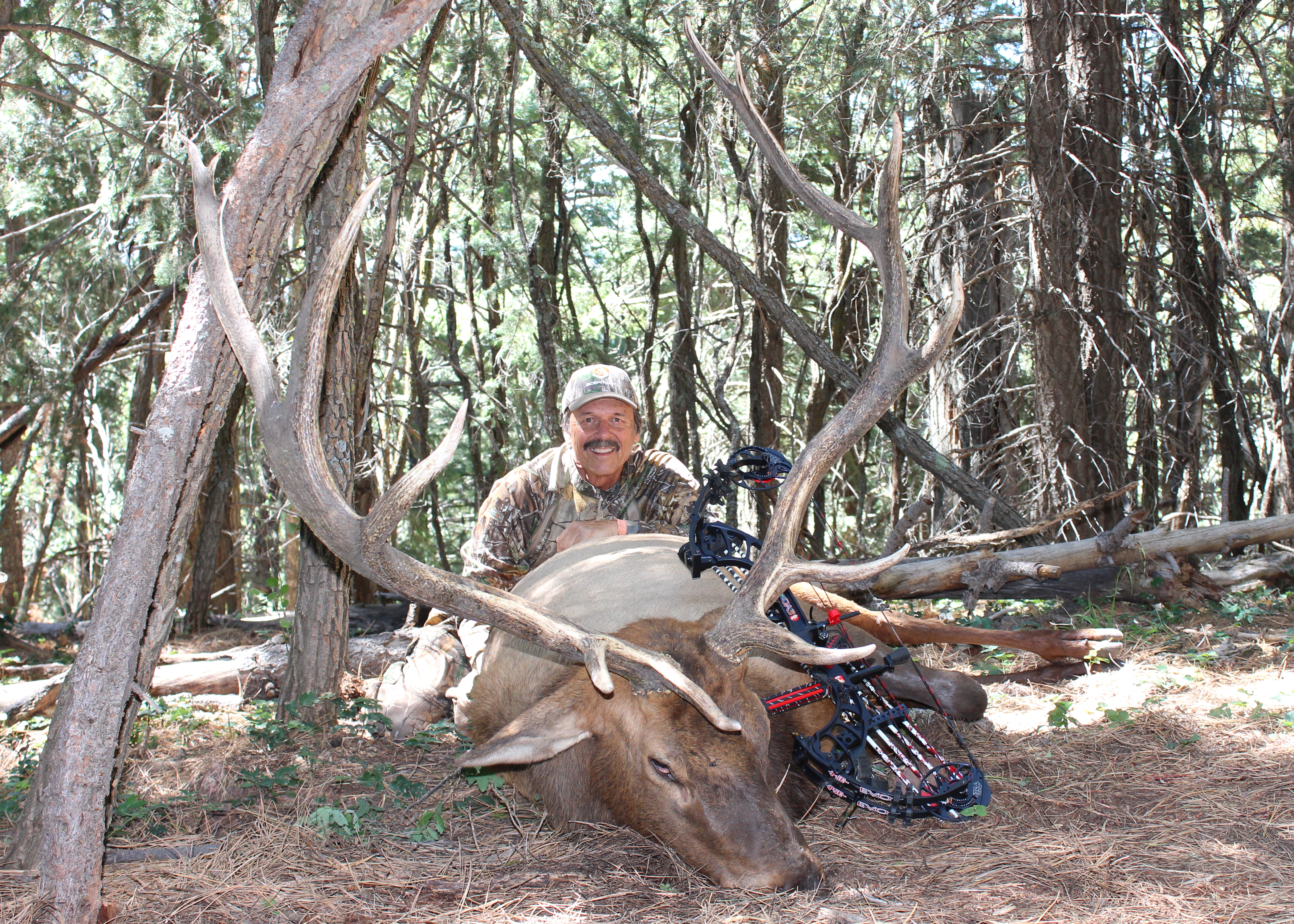
Leave a Comment